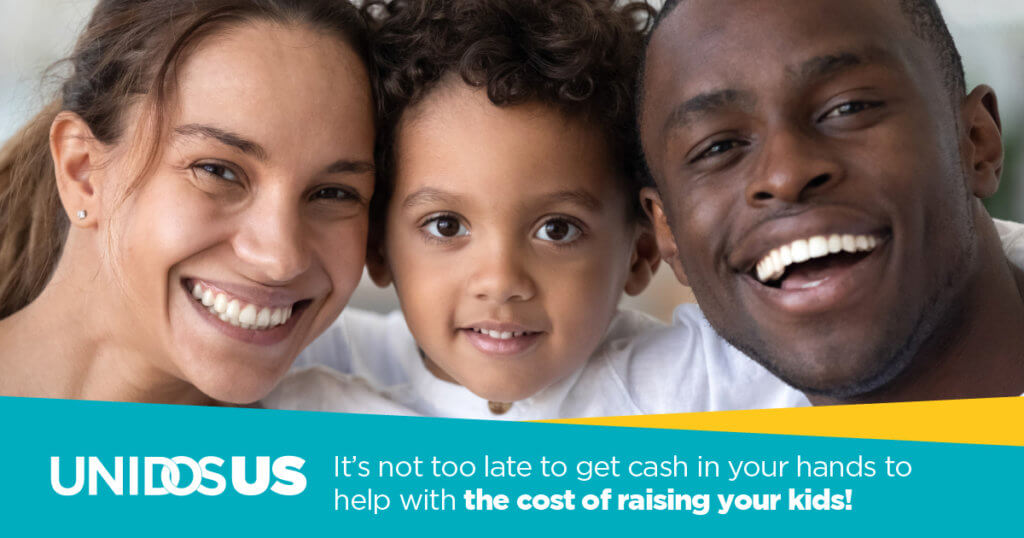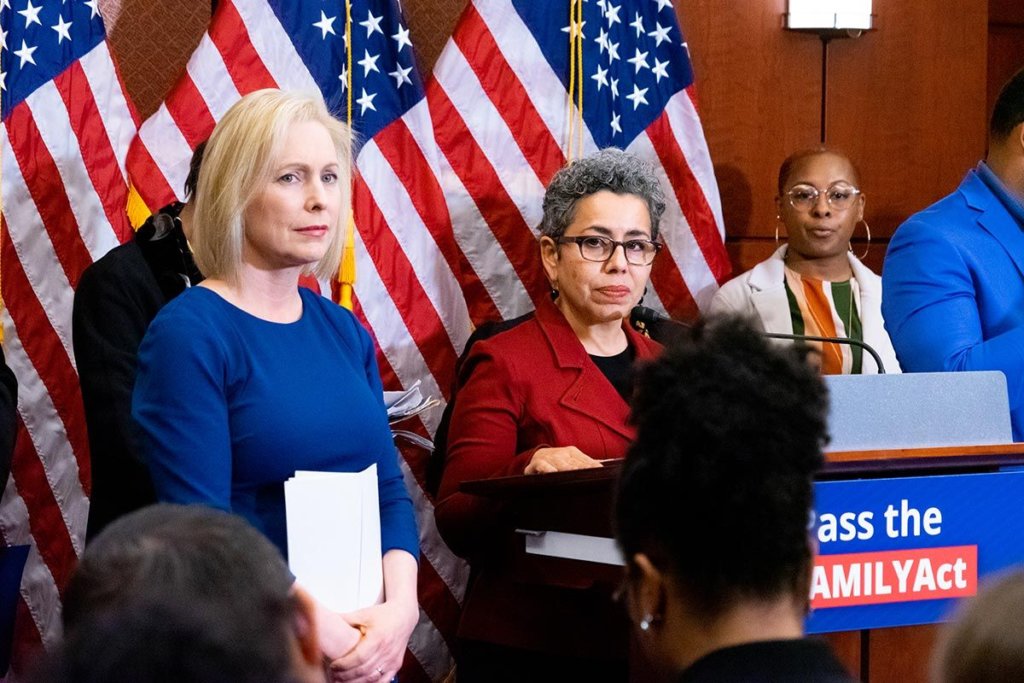A Public Health Researcher Discusses How Subgroups of Latino Families are Experiencing Heightened Stress Levels
In today’s intolerant political climate, it’s no surprise Latinos are experiencing high levels of distress—sometimes leading to depression and anxiety– but it’s still important to measure how that plays out within subgroups of Latinos, such as those with different legal statuses, and how it affects the daily lives of families and communities. In an effort to better understand how Latino parent-child dynamics are affected by current events, Dr. Patricia Foxen, UnidosUS’s Deputy Director of Research, recently conducted an interview with an expert who investigates these very issues. Dr. Kathleen Roche is an associate professor at the George Washington University’s School of Public Health in the division of prevention and community health. She looks at how immigration policies affect Latinos’ mental health, involvement in risk behaviors, and success in schools as they confront experiences of discrimination in their neighborhoods, schools, and other public spaces.
Q: You recently conducted a study of the parents of adolescents with different residency statuses. What were you interested in finding out?
A: The study with Latino parents of adolescents in the United States was spurred by the fact that we’ve experienced as a country some unprecedented changes in immigration actions and news tied to the Trump administration. We were very interested to know how parents were coping with these changes. We know from prior research that when parents experience things in their community settings—directly or indirectly—their adolescents, by virtue of living in that family, are affected by parents’ own experiences. This study included more than 200 Latino parents who were either undocumented, permanent residents of the United States, had temporary protected status, or were citizens.
We wanted to know how these different parents were experiencing changes in immigration actions and news. We administered a survey to these parents which provided them with a list of 15 different possible experiences that they might have had in the prior few months. Parents reported whether or not the experience had occurred ”never” or “almost never” all the way up to ”almost always” and “always.” We talked to these parents during November of 2017, in the midst of many changes around immigration policy, DACA, and temporary protected status, as well as increased deportation of Latino immigrants living in the interior of the country, not just at the border.
The results demonstrated a fairly high percentage of parents reporting that they “very often” or “always” worried about family separation. They warned their children to stay away from authorities such as police. They talked to their children about where they hang out after school. They also worried that it would be hard for their children to finish school. The families avoided getting medical help, or help from the police, or public assistance in the form of nutrition and income support. The percentages of parents reporting these adverse responses ranged from almost 50% to two-thirds of families worrying about separation.
Of course, it was not surprising in this research that we found citizen parents were significantly less likely to experience these adverse responses to changes in immigration actions and news. What surprised us was that legally residing Latino parents experienced risk at the same levels as the undocumented parents. This was a little bit different than what we had seen in prior research. The parents with temporary protected status in our study were at the most elevated risk for experiencing many of these adverse responses and even permanent residents in some cases reported these adverse responses.
We then looked at the ways in which immigration actions and news affect those kinds of behavior changes—the worries and concerns, and the kind of daily life adversities. We wanted to understand how those things are related to parent’s psychological distress, which is measured by clinical symptoms of anxiety and depression. Pretty much across the board we found that in most cases when parents “very often” or “always” responded in negative ways to immigration actions and news, their odds of experiencing high distress were at least 300% greater than when parents did not report that level of frequency in terms of being negatively impacted. The survey results were most striking in terms of the high prevalence of adverse response, and in the fact that temporary protected status and even permanent resident parents often rival their undocumented counterparts in terms of adversity.
But we still didn’t have the complete story just by relying on survey responses, so we selected a subset of 50 Latino parents from the study and held focus groups with them. They were homogenous with respect to residency status. The focus groups and enabled parents to have discussions with each other, with just a general guiding question about how their lives have changed since these immigration events have occurred. In those narrative results, we found three primary themes: one is that of worries and concerns that parents across the board were experiencing; the second was how they change behaviors primarily by reducing their travel to airports and on highways out of fear of racial profiling; and the third was adversities that affect their daily lives.
The narratives that we heard from parents were pretty unique to their residency status, and the ways in which parents’ lives were differentially experiencing this were not surprising to us. Undocumented parents were the most acutely affected, and citizen parents were primarily worried about their community members, family members, and others. Parents with temporary protected status described worries about what the future would hold given that TPS was being announced as ending. The permanent resident parents were somewhat confused and worried about what the future would be like for them, not having citizenship but being a legal resident.
Those things all differ in many ways, but one daily life adversity that was raised by parents across the board was the experience of being discriminated against due to their skin color or their language use. The discrimination experiences were pervasive. Parents described discrimination as happening in schools, on buses, in public restaurants and stores; they were manifested by bullying, racial profiling, and by general mistreatment. Oftentimes the perpetrator did justify their actions of discrimination in the name of the new current administration, the president of the United States, as well as the current political climate. The experiences that parents described about this blatant discrimination were not different depending on residency status—which is not surprising given that on the outside no one knows if someone is a citizen or permanent resident, temporary protected status or undocumented. The parents did describe these discrimination experiences as having changed since the current administration took office. So it’s not that they didn’t occur before, but they were much more pervasive and more elevated now that the country has changed. Parents are worried about their children’s experience of discrimination by peers and teachers at schools, and again, there’s mistreatment by bus drivers or by employers not paying Latino workers on time because they know many of them are vulnerable. The racial profiling parents described was really quite striking. It was occurring at airports and by strangers, to the point that these citizen parents said they no longer felt that the white race, as they described it, welcomed them in the community.

Q: You and your team are in the process of conducting another major study in the Atlanta area. Can you tell us a little bit about that study?
A: The study that my team and I are conducting now began about a year ago in 2017 through funding from the National Institute of Child Health and Human Development. We are collecting survey data from 600 Latino adolescents and their parents. The youth are between sixth through eighth grades at the first time point when we collect their data, but we will follow them for four years and collect data from them twice a year, in both the fall and the spring. What we’re trying to learn from youth and their parents is: what are their experiences in their neighborhoods, in their schools, in their peer groups, and in their families? That can help us understand trajectories toward successes, as well as opportunities for growth and risk.
I’m very interested in how social context can support parents who are facing challenges in their community, as well as some of those factors that exacerbate risk. For example, in the neighborhood we’re looking at, experiences of discrimination, and also of being included. We’re looking at the degree to which they have exposure to other Latinos. In the schools we are looking at support from teachers, and discrimination by teachers, to what extent teachers encourage these students to take advanced placement courses early on in their educational careers. In the peer group the same thing. How are they accepting the Latino students, how are they discriminated against them this immigrant climate? We then have an extensive set of questions that tap into parents’ monitoring of their adolescents’ behaviors. We look at warmth and closeness in the parent-adolescent relationship, something that can be compromised when parents are under stress. We look at parent-adolescent conflict, which can be more common in Latino immigrant families acculturating to the United States because youth adopt ways of living in the United States more rapidly than their parents. We want to look at this complex array of factors, so that we can identify those things that parents can do to help their children be successful. We can identify things that schools can do to help students and their families have success and things that possibly might change at a neighborhood level to support Latino families settling in the United States.
This study is taking place in a new immigrant destination in the United States. The study is ending in 2022, but we will be continuing to present and publish findings starting as early as 2019.
Q: Could you speak about how your research can inform educational programs and interventions that aim to strengthen Latino kids and their families?
A: Many Latino families who have moved to the United States in the past couple of decades struggle with an important gap in culture between the home environment and the school environment. Oftentimes school environments—when they have a lack of understanding of Latino culture—misinterpret parents’ behaviors and parents’ involvement in the school. There are so many things that schools could potentially learn from Latino families—what involvement means for these families, barriers around English language use. In the United States, speaking up on behalf of your children and contacting teachers is an accepted thing and expected practice. This is really something that is unfamiliar for many of the Latino families, and therefore teachers may misinterpret that to think that Latino families are not involved and don’t care. They do care, a great deal actually. We know that from research. Many of the reasons they’re here in the first place is to improve their children’s educational success. There is a great deal that school districts need to learn and that Latino families need to learn about the U.S. school system so that we can to bridge that gap. It is my hope that our research can indicate those gaps and how they matter.
-The text version of this interview has been edited for clarity.




